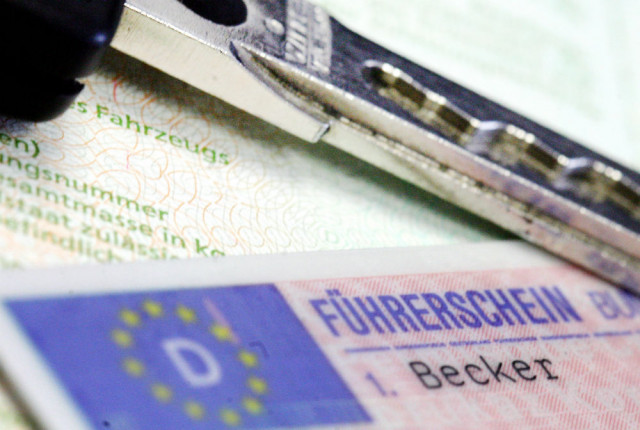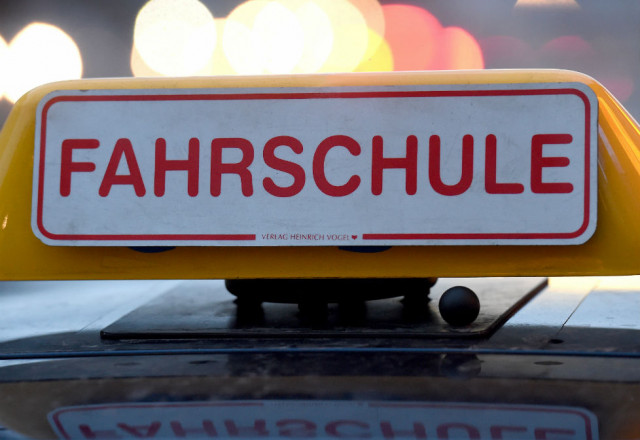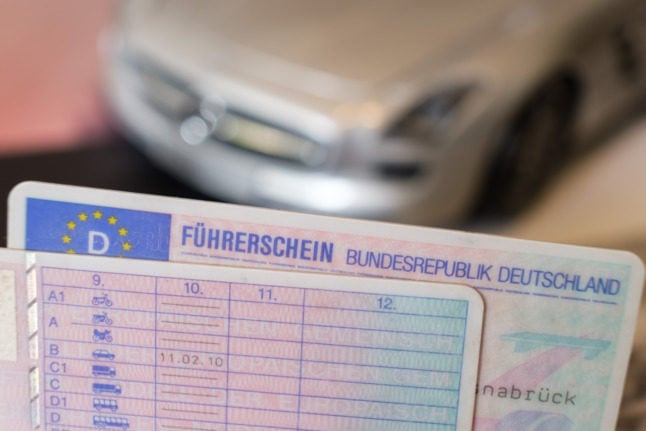This article is available to Members of The Local. Read more Membership Exclusives here.
Using a foreign licence
One of the first things foreigners think of when they move to Deutschland is whether or not they’re allowed to drive without restrictions in the country.
That depends on where you got your driver’s license and how long you’ve been here.
If you’re 18 years of age or older and you have a licence which was issued from a member state in the European Union (EU) or the European Economic Area (EEA), you may drive motor vehicles in Germany of the category that’s indicated on your licence without restrictions.
And if it’s on the verge of expiring or for whatever reason you’d prefer to exchange it, you can get your hands on a German one of the same category upon request. The cost is around €35 but it varies across the country.
 A German driving licence. Photo: DPA
A German driving licence. Photo: DPA
You should note as well that when it comes to renting cars in Germany, you need to be at least 18, states the German Automotive Club (ADAC), with individual companies setting their own age limits from 19 or even 25.
Motorists from non-EU and non-EEA countries may similarly use their foreign licence as a resident in Germany – but only for a maximum of 185 days. After that, your driving licence will no longer be recognized. So if you plan on staying a while, you might want to consider getting a German one.
Getting a German licence
When it comes to getting einen deutschen Führerschein (a German driving licence), it gets a bit more complicated because the rules differ according to what country your original licence is from.
Germany has a special agreement with several countries, such as Canada, Australia, Japan, Namibia, South Africa, Switzerland and Israel. People with driving licences from these countries have to submit fewer documents and generally do not need to complete exams in order to get a German licence.
When I moved to Germany in 2012, I remember the process being surprisingly unbureaucratic and simple at my local Führerscheinstelle (driving licence office). As a Canadian citizen, for a reasonable fee I was able to exchange my licence for a German one without having to complete any exams – the same applies for Canadians in Deutschland today no matter which province or territory they’re from.
For American nationals keen on obtaining a German licence, whether or not you need to complete a test depends on the state your licence is from.
People with licences from New York, California, and Hawaii, for instance, must complete both a practical and a theoretical driving test. But people with licences from states such as Florida, District of Columbia and Tennessee only need to complete a theoretical test.
Meanwhile US citizens from 28 states, including Michigan, Texas and Washington, can exchange their licence for a German one without having to complete any exams.
It's advisable not to wait too long if you do decide you want to trade in your licence for a German one. Some cities in Germany require that you do so within three years of establishing residency in the country; after this time you risk having to start from scratch (take tests, complete driving school, etc.).
If your licence isn’t listed as from one of the countries with which Germany has a special agreement, nor is it from within the EU or EEA area, you need to take theoretical and practical tests in order to get a German Führerschein.
1. Apply for your licence
The first step in applying for your driving licence is to submit the required documentation. This is necessary in order to take driving lessons and eventually, the final test.
Information on the documents which are required for the application can generally be found on the website of the city in which you live. If you live in Berlin, for instance, you need to book an appointment online as well as come in for a personal meeting. A typical prerequisite is that you have to be a resident in the city where you apply.
Further documents you might need to show are proof of first aid training as well as certificates for eye and medical tests. Moreover, if your original licence isn’t in the German or English languages, it may need to be translated – though this is up to your local Führerscheinstelle to decide.
 Photo: DPA
Photo: DPA
For UK national Anja Samy, signing up with a driving school from the get-go was useful as they helped her through this process even before she was permitted to get behind the wheel.
After the 21-year-old registered with a Fahrschule (driving school) in Celle, North Rhine-Westphalia in 2014, they organized a first aid course and an eye test for her. “Both of these tests were in German,” she tells the Local, adding that “you don’t need to speak German well in order to pass them.”
It usually takes about four to six weeks for the application to be processed and costs about €45, though this varies from city to city. During this time Samy went ahead with the next step and began preparing for the written test with her Fahrschule.
2. Prepare for your theoretical and practical driving test
In order to obtain a German driving licence, a compulsory amount of theoretical and practical training hours must be completed in a driving school. In other words, unlike some countries where it’s possible to learn how to drive from a relative or a friend, legally this doesn’t fly in Germany.
This also means you’ll have to be prepared to take on the cost of a full course with a driving school – anywhere from €1,000 to €2,000.
The good news is there are plenty of Fahrschulen to choose from across the country, some of which even offer lessons in English. For a total of about three months, Samy attended weekly lessons focusing on traffic laws. Alongside these classroom sessions, she applied what she learned behind the wheel with an instructor.
Each driving school is different though. While some offer theoretical lessons as frequently as twice a week, others have crash courses during certain periods such as the summer holidays where you can get the written component out of the way much more quickly.
After Samy passed her written test, which was in English, she was ready to focus on acing her practical driving test. Depending on your city, you might have the option to complete the written test in your native language (e.g. Turkish or Russian).
“My instructors were German but they spoke mostly English to me,” Samy says.
12 driving lessons with an instructor is usually the minimum, but this number can vary depending on how quickly you learn. This means that those who are really motivated can complete both the classroom sessions and the driving lessons in as little as three months.
3. Taking the final test
If you’ve gotten this far in your German driving school adventure, congrats! You only need to overcome one last hurdle: the final test. Keep in mind that this must be taken within twelve months of passing your theoretical test.
The practical test is typically taken in German with your driving instructor and an official examiner. If your German language skills aren’t anything close to fluent, however, don’t sweat it.
“There's no need to worry,” says Samy. “If your driving school teaches in English, your instructor will be there during the test to give you instructions.”
But even for those with driving schools that only teach in German, if you’re prepared and understand a little bit of German you should be fine, as the examiner doesn’t say much.
Samy’s test lasted about half an hour and she was tested on such things as her parking capabilities and her ability to drive on the Autobahn. She was also asked to make an emergency stop and a three-point turn.
 A young man in Schwerin right after he passed his driving test. Photo: DPA
A young man in Schwerin right after he passed his driving test. Photo: DPA
Immediately after the test is over you are told whether you’ve passed. If you've aced it, not long afterwards your official driving licence will be sent to you via post.
There’s no reason to panic though if you've failed it; you can schedule another practical exam as long as it's at least two weeks later.
Your Führerschein will be valid for 15 years, after which you'll have to apply for a new one.
SEE ALSO: Six reasons why I never want to drive on the Autobahn again



 Please whitelist us to continue reading.
Please whitelist us to continue reading.